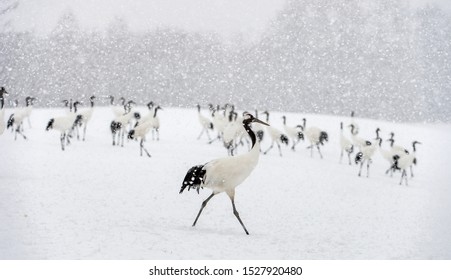
Portland Metro Area Birding Hotspots
The Portland metropolitan region is a haven for nature lovers, especially those with an interest in birding. The area offers an abundance of wildlife refuges and natural areas, providing a diverse range of habitats for a variety of bird species. Whether you’re a seasoned birder or a beginner, you’ll find plenty of opportunities to explore the natural beauty of this region.
One of the great things about birding in the Portland area is the variety of habitats available. Forests, wetlands, grasslands, buttes, and rivers all provide unique environments for different types of birds. The region’s numerous parks and natural areas offer an opportunity to explore these habitats within city limits, while many other prime birding locations are located within a forty-five minute drive.
Some of the most popular birding spots in the region include Ridgefield National Wildlife Refuge, Tualatin River National Wildlife Refuge, and Sauvie Island Wildlife Area. These locations offer a chance to see a wide range of bird species, including ducks, geese, herons, raptors, and songbirds. Other popular areas for birding include Mount Tabor Park, Forest Park, and the Columbia River Gorge.
For those who are new to birding, there are plenty of resources available in the Portland area to help you get started. Local birding clubs and organizations offer field trips, workshops, and classes to help you learn more about bird identification, behavior, and conservation. The Audubon Society of Portland also offers a variety of programs for birders of all ages and experience levels.
In addition to its rich birding opportunities, the Portland metropolitan region also offers a wealth of other natural and cultural attractions. From hiking and biking trails to museums and galleries, there is something for everyone to enjoy. Whether you’re a local resident or a visitor to the area, the Portland region is a great destination for birders and nature lovers alike.
The greater Portland metro area is a birding paradise, offering an array of habitats that attract a diverse range of species. Whether you’re a seasoned birder or a beginner, there are plenty of opportunities to spot some amazing birds in this region. Here are 15 birding hotspots in the greater Portland metro area that you won’t want to miss.
-
Ridgefield National Wildlife Refuge – This refuge is located just across the border in Washington State and offers a chance to see sandhill cranes, bald eagles, and other waterfowl.
-
Tualatin River National Wildlife Refuge – This refuge offers a chance to see a variety of waterfowl, including ducks, geese, and swans.
-
Sauvie Island Wildlife Area – This island offers a variety of habitats, including wetlands, forests, and grasslands, and is a great place to see a wide range of bird species.
-
Mount Tabor Park – This park offers a chance to see a variety of songbirds, including the Pacific wren, and is also home to several species of woodpeckers.
-
Forest Park – This park offers a chance to see a variety of bird species, including the northern pygmy-owl, brown creeper, and chestnut-backed chickadee.
-
Columbia River Gorge – This area is a prime spot for raptors, including the bald eagle, and also offers a chance to see songbirds and waterfowl.
-
Tryon Creek State Natural Area – This park offers a chance to see a variety of bird species, including the Acorn woodpecker and a variety of songbirds.
-
Powell Butte Nature Park – This park is a great spot for raptors, including the red-tailed hawk, and also offers a chance to see a variety of songbirds.
-
Oaks Bottom Wildlife Refuge – This refuge is a great place to see waterfowl, including ducks and geese, as well as raptors and songbirds.
-
Smith and Bybee Lakes Wildlife Area – This area offers a chance to see a variety of waterfowl, including ducks and geese, as well as raptors and songbirds.
-
Kelly Point Park – This park is a great spot for waterfowl, including ducks and geese, as well as raptors and songbirds.
-
Crystal Springs Rhododendron Garden – This garden offers a chance to see a variety of waterfowl, as well as songbirds and raptors.
-
Commonwealth Lake Park – This park is a great spot for waterfowl, including ducks and geese, as well as raptors and songbirds.
-
Oaks Amusement Park – This park is a great spot for waterfowl, including ducks and geese, as well as raptors and songbirds.
-
Gabriel Park – This park is a great spot for songbirds, including the chestnut-backed chickadee, as well as raptors and waterfowl.
Whether you’re a local resident or a visitor to the area, the greater Portland metro area is a must-visit destination for birders. With so many hotspots to explore, you’re sure to spot some amazing birds and create unforgettable memories.
Portland Audubon Wildlife Sanctuary
Located just ten minutes from downtown Portland, the Portland Audubon Wildlife Sanctuary is a perfect destination for nature lovers, families, and bird enthusiasts. Covering an expansive 172 acres, the sanctuary offers visitors the opportunity to explore its diverse habitats, including forested areas, a pond, Balch Creek, Bones Creek, and old-growth trees, by hiking on its four miles of trails. With the chance to see various native plants, birds, and other wildlife, the sanctuary provides a unique opportunity to tune in to the natural world. Furthermore, the sanctuary is open to the public every day, from dawn until dusk, free of charge.
If you’re planning a visit to the Portland Audubon Wildlife Sanctuary, you’ll want to check out the Nature Store on site. The store offers a wide variety of items, including optics, field guides, gifts, and more. Whether you’re a seasoned birder or just starting out, the Nature Store has everything you need to enhance your experience and take your love of nature to the next level.
In addition to the Nature Store, the sanctuary is also home to a Wildlife Care Center. Here, the staff and volunteers work tirelessly to treat over 3,000 native wildlife each year. This includes injured and orphaned animals that are brought in for care and rehabilitation. The Wildlife Care Center is a vital part of the sanctuary’s mission to protect and preserve the natural world, and visitors are welcome to learn more about its work.
By visiting the Portland Audubon Wildlife Sanctuary, not only will you have the opportunity to explore a beautiful natural area and see a variety of wildlife, but you’ll also be supporting important conservation efforts. Whether you’re a bird enthusiast, a nature lover, or simply looking for a unique and educational experience, the sanctuary and its Nature Store and Wildlife Care Center are not to be missed.
Here are some of the birds that you may encounter by sight or sound while exploring the greater Portland metro area: Pacific Wren, Spotted Towhee, Chestnut-backed Chickadee, Northern Pygmy-Owl, Varied Thrush, Golden-crowned Kinglet, Pileated Woodpecker, Steller’s Jay, and Black-headed Grosbeak. For a comprehensive list of bird species in the area, please refer to our complete bird species list.
The address of the location is 5151 NW Cornell Rd, Portland, OR 97210.
Accessing the sanctuary via public transit can be a bit tricky as there is no direct service within 1.5 miles. However, it is possible to reach the sanctuary by taking the lower MacLeay trail, which starts 6 blocks west of the bus stop located at Northwest Thurman St. and Northwest 27th Ave. The bus stop is served by TriMet buses 15 and 77. Once you arrive, you will need to walk one block north to Upshur St. and then six blocks west along the hiking trail. The trail takes approximately 45 minutes to hike uphill along Balch Creek Canyon before reaching the Portland Audubon Wildlife Sanctuary.

The majority of the indoor facilities at the Portland Audubon Wildlife Sanctuary, including the Interpretive Center, Nature Store, classroom space, and Wildlife Care Center, are wheelchair accessible. However, it is important to note that the trails are not wheelchair accessible due to steep elevation changes. If you would like more information on accessibility at the sanctuary, please see our accessibility details.
Oaks Bottom Wildlife Refuge
Covering an area of 185 acres, Oaks Bottom Wildlife Refuge is located on the eastern side of the Willamette River in Southeast Portland. This refuge serves as a vital protection for Oaks Bottom, a floodplain wetland that was once scheduled for landfill and industrial development. The refuge is characterized by its diverse landscape, which includes marshes, wet woods, meadows, and open water, and is home to a rich birdlife, with 157 species recorded annually. Oaks Bottom Wildlife Refuge is a popular destination for birdwatchers, particularly during the migration and wintering seasons, where visitors can observe waterfowl, Ospreys, and Great Blue Herons, which have a massive rookery on nearby Ross Island. The refuge is also home to a variety of wetland and woodland songbirds. Visitors are advised that some of the trails may be muddy if not paved.
You may have the opportunity to spot or hear several bird species at Oaks Bottom Wildlife Refuge, including but not limited to Northern Pintail, Great Blue Heron, American Coot, Osprey, Red-winged Blackbird, Wood Duck, and Brown Creeper.
The location of Oaks Bottom Wildlife Refuge is at the intersection of SE Sellwood Blvd and SE 7th Avenue in Portland, OR 97202.
Oaks Bottom Wildlife Refuge can be accessed via public transit by taking TriMet’s bus 70 to Milwaukee and getting off at the Southeast 13th Ave and Selwood stop, which is located ⅓ of a mile away from the entrance area. Alternatively, you can take the 19 bus to downtown Portland and get off at Southeast Bybee and Milwaukee, or take the Northbound 70 bus to Southeast 17th Ave and Rex, or take the 19 bus from downtown to Southeast Bybee and Southeast 17th Ave, which are all located about ¾ of a mile away from the entrance area.
Visitors to the Portland metropolitan region who are looking for accessible trails will be pleased to know that there are a variety of options available, including extensive paved and wheelchair accessible trails as well as dirt paths. These trails are suitable for people of all abilities, including those with mobility impairments, and provide a great way to explore the natural beauty of the region.
Whether you’re looking for a leisurely stroll or a more challenging hike, the paved and wheelchair accessible trails offer a smooth and easy-to-navigate surface. These trails are also ideal for families with strollers or people using mobility devices, such as wheelchairs or walkers.
For those who prefer a more rustic and natural experience, dirt paths are also available. These trails wind through forests, wetlands, grasslands, buttes, and rivers, offering a closer look at the natural environment and the wildlife that call the region home.
No matter which trail you choose to explore, you’ll find that the Portland metropolitan region offers a rich array of birding opportunities and a chance to connect with nature in a beautiful and accessible setting.
Powell Butte Nature Park
Mt. Scott Park, located in Southeast Portland, offers visitors a unique opportunity to climb an extinct volcanic cinder cone and enjoy panoramic views of the surrounding landscape. The 614-foot summit is accessible via a short but steep climb, and visitors are rewarded with stunning vistas of the 610-acre wooded terrain and beyond. Bald eagles and red-tailed hawks can often be spotted soaring overhead.
The park’s 9 miles of paved and unpaved trails provide ample opportunity for pedestrians, cyclists, and horseback riders to explore the red cedar forest, hawthorn shrubland, meadows, and riparian habitat along Johnson Creek. Meadowlands within the park host a variety of bird species, including killdeer, barn owls, American kestrels, and Western bluebirds. Locally rare Lazuli buntings are known to inhabit the shrubbier habitat.
Mt. Scott Park is conveniently located adjacent to some of Portland’s major roadways, including Powell Blvd and Holgate Blvd, as well as the 22-mile Springwater Corridor biking and pedestrian trail. With its unique geological features and diverse wildlife, Mt. Scott Park is a must-visit destination for nature enthusiasts and outdoor adventurers alike.
Possible rephrased text: Some of the bird species you could see or hear in this park include Red-tailed and Sharp-shinned Hawks, Bald Eagles, American Kestrels, Buffleheads, American Widgeons, Anna’s Hummingbirds, Mourning Doves, Western Bluebirds, Lazuli Buntings, and Band-tailed Pigeons.



